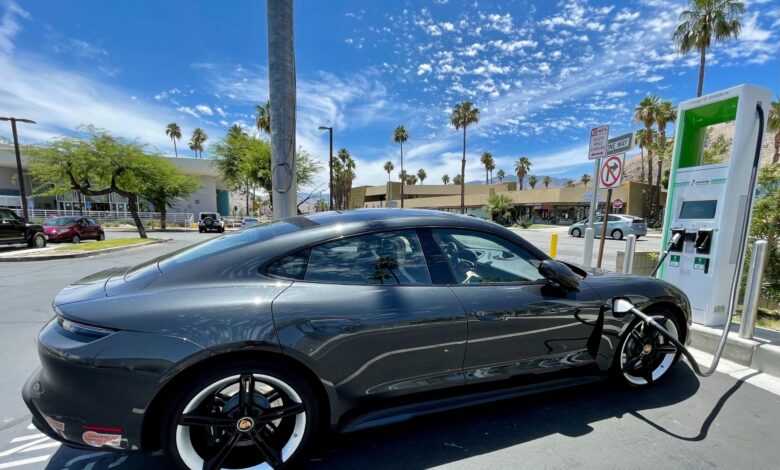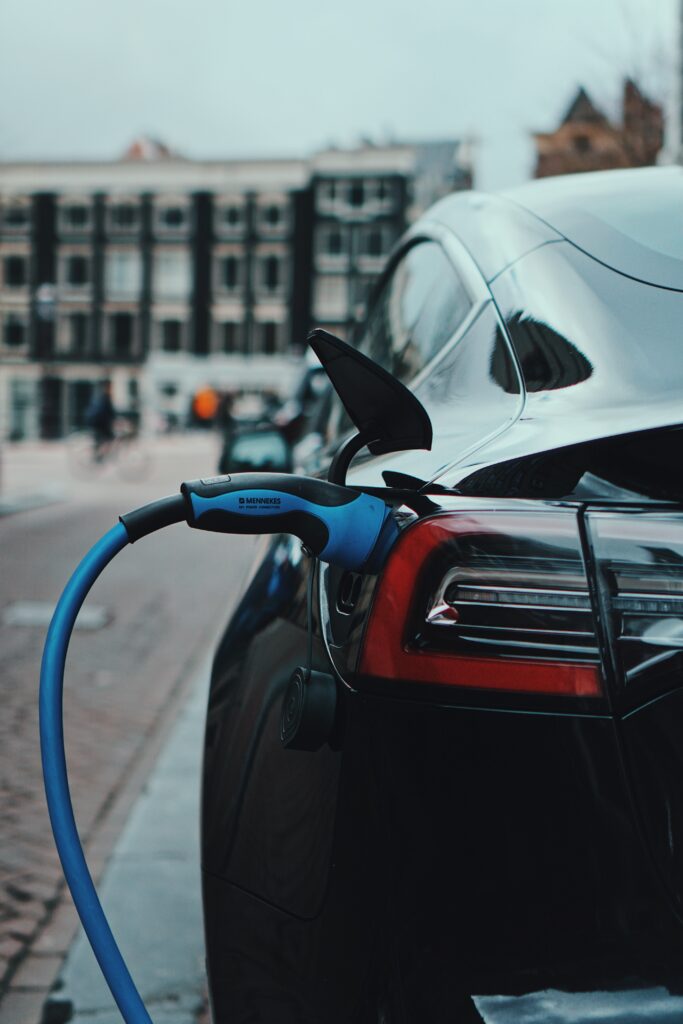Why Electric Vehicles (EV) are better than traditional cars and bikes

What are Electric Vehicles ?
Electric vehicles are vehicles that run on electricity. These vehicles contain an electric motor in place of a combustion engine. Also, these vehicles do not use gases and fuels, which makes them the best replacement for traditional automobile vehicles.
The different types of Electric Vehicles

- Battery Electric Vehicles: Also known as plug-in EVs, these are fully electric vehicles that do not contain any engine, fuel tank or exhaust pipe or produce emissions. These vehicles run on electricity stored in a battery pack that uses an external electric outlet for charging the battery.
- Hybrid Vehicles: These vehicles contain a combustion engine and an electric motor. The engine gets the energy from fuels and the motor from the electric battery. Both run simultaneously to drive the vehicle.
- Plug-in hybrid vehicles: Primarily, these vehicles run on electricity but also contain a fuel engine for emergency purposes, in case the battery is drained. These are plugged into electricity sources like battery electric vehicles to recharge the battery. While using the fuel engine, these vehicles produce emissions as well.
- Fuel cell vehicles: These use a fuel cell in place of a battery. The fuel cell split electrons from hydrogen molecules and produces electricity which runs the motor.
How do Electric Vehicles work?
Electric vehicles run on an electric motor in place of a combustion engine. This electric motor gets energy from a controller, which converts the current from AC to DC. The electric vehicle uses rechargeable batteries that are powered by electricity to run the motor. These vehicles do not have any combustion engine that makes them environment friendly as they do not produce any fuel emissions.
Components of All-Electric Vehicles

All-electric vehicles have mostly the same components. These are:
- Battery: The function of a battery in an electric vehicle is to provide electricity/energy to power vehicles. The type of battery used here is rechargeable.
- Charger: It is a device used to charge the battery. The charger uses electricity from an outside source to power the battery. Here, AC electricity is converted into DC electricity that is stored in the battery.
- Charge port: It is the port that connects the vehicle to an external electricity supply source to charge the battery.
- Inverter: It converts the Direct Current (DC) on the battery into Alternating Current (AC), which helps run the electric motor.
- Controller: It functions as a regulator to transfer the energy from the inverter and battery to the electric motor.
- Transmission: It provides the power from the motor to run the vehicle.
- DC/DC converter: It converts higher-voltage DC power from the battery to the low-voltage power that runs the vehicle.
- Electric traction motor: The motor uses the power from the traction battery pack to drive the vehicle’s wheels.
- Thermal system: Also known as a cooling system, it helps maintain an adequate temperature of the different parts of the vehicle, including the engine, electric motor, power electronics.
The types of Current in Electric Vehicles

There are two types of electrical currents that fuel an electric vehicle. AC (alternating current) and DC (direct current). The power received, from the outside source is always AC, and the energy stored in batteries is always DC.
AC Electric Vehicles
Electric vehicles have a converter that converts energy received as AC to DC and then transfers it into the car’s battery. It is the most common charging method for electric vehicles today, and most chargers use AC power.
DC Electric Car
We know that energy stored in the battery is always DC, and the energy received from the power supply is always AC. So, the main difference between AC and DC electric cars is the location where the AC power gets converted; inside or outside the car. Unlike AC electric cars, DC cars coverts the current into DC from AC in the charger itself. In these types of cars, there is no requirement of any onboard charger or converter to convert the energy from AC to DC.
Charging Connectors of Electric Vehicles
As mentioned, electric vehicles are powered using an external power supply that is stored in the traction battery, which runs the wheels.
There are three types of chargers used to power the vehicle:
- Three-pin plug–It is a standard three-pin plug used to connect to any 13 amp socket.
- Socketed -It helps to connect either a Type 1 or Type 2 cable.
- Tethered – a charge point with a cable attached with either a Type 1 or Type 2 connector.
Electric Vehicles and their range

“Range” of an electric vehicle is the distance it can travel before the battery needs to be recharged. The range is a crucial factor as all your commute depends on it–whether you could make it to your destination or next public-charging spot or not? Another factor why the range matters are because electric vehicles can travel barely half of the distance before they require a refill.
The various factors that determine the range of an electric vehicle are battery capacity, power, average speed, acceleration intensity, road topography, the weather, the number of passengers, etc.
Brands such as Tesla, Volkswagen, ŠKODA, Jaguar, Kia e-Niro, Mercedes have manufactured electric vehicles with the highest ranges.
Some popular electric vehicles brands in India include: Tata Nexon EV, MG GS EV, Hyundai Kona, a number of new Electric Vehicles are slated to release in 2021 and early 2022 in India.
How expensive is it to run an electric car?

Electric vehicles are becoming more and more popular globally as they are eco-friendly, but buying an electric car is way expensive than traditional fuel cars. The main reason for this is the high-end battery of the vehicle.
Electric vehicles are considered a luxury, and there are many reasons to support this:
First, being the factor that electric vehicles are way expensive, and their chances of suffering the damage are too high compared to traditional cars. Also, the repair costs are sky-rocketing high.
Although electric cars have fewer components, all are highly complex and expensive and require high maintenance, as they can be easily damaged.
However, it is cheaper to run an electric vehicle than a fuel car, as recharging the battery costs much less than fueling the pump.
Greenhouse gas emissions and Electric Vehicles
Electric vehicles do not directly emit greenhouse gas emissions during operation, but indirect emissions can occur when it is recharged.
The research is done by the universities of Cambridge, Exeter, and Nijmegen in The Netherlands to conclude if electric vehicles are greener or not. It is clear that overall, electric cars produce way fewer emissions than traditional cars.
Another research done by the Massachusetts Institute of Technology found that manufacturing an electric vehicle produces more emissions than a fuel car.
But this high emission cost is offset in the long run as the per-mile emissions for these vehicles are way less than fuel cars.
Future of Electric Vehicles

The automobile industry is going to turn into an all-electric, way sooner than you can imagine.
Yes, the statement may sound bold now but have patience and bear with me. You will believe it.
- There is continuous innovation in the industry to lessen the production costs of batteries. It will make the electric car cheap so that more people can afford it.
- Many luxury brands like Jaguar and Volvo will manufacture only electric vehicles in the next few years.
- Brands like Ola have started manufacturing electric scooters.
- Many countries are also banning the selling of petrol/diesel cars to push the public towards electric vehicles.
- Autonomous driving options, personalized smart-help solutions, 5G embedded next-generation technologies are some of the additional features that electric vehicle offers to make it even more appealing to the public.
Conclusion
Electric Vehicles are definitely more environmentally friendly and convenient than traditional combustion vehicles. They produce no fuel emissions, can be recharged easily sitting in the home, and are cheaper to operate.
As the technology progresses, there is no time left when all the traditional automobiles will be taken over by Electric vehicles.



